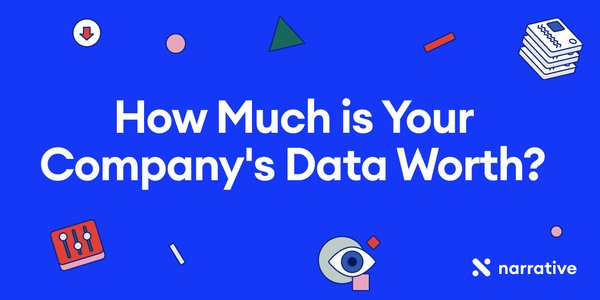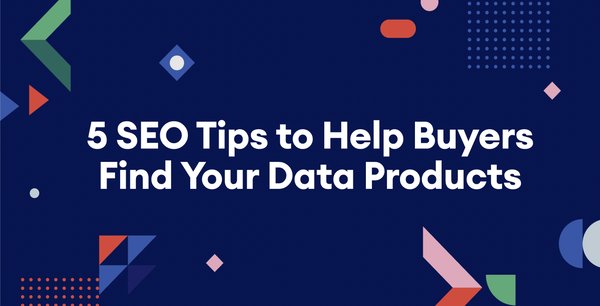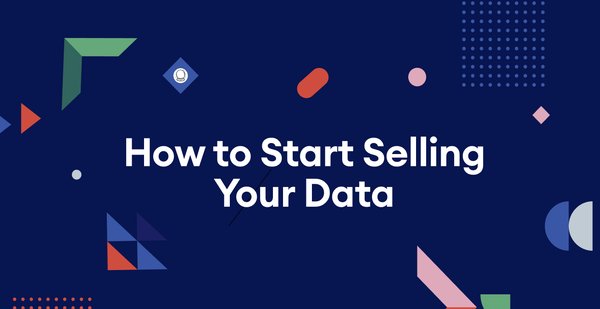Data products have the potential to drive new business value and generate new revenue streams for your organization. However, creating your data product and listing it in a data marketplace won’t be enough to ensure that your data products sell. Potential customers need to see why they should buy your product. That’s why the description is the key to success – it’s not just about what data your product contains, but how you sell it to your buyers.
The data product description is the only chance you have to convince your customers that they should purchase your data product, so it’s important to write it with care. It’s your opportunity to tell a story about your data and to highlight your data product’s unique characteristics and uses. It’s also very important for SEO to write product descriptions that search engines will be able to find, index, and push to buyers that are searching for data like yours.
In this blog post, we’ll explore how to create a good product description for your data products and offer examples and templates that will help get you started.
Give your data product a unique and descriptive name
The name of your data product is the first thing that your customers will see. It’s important to tell your buyers exactly what your data product is in the title, but tell them at a glance. An overly descriptive title might confuse buyers while an overly simple one will not give the buyer enough information to know if they want to buy your product or not.
For instance, titling a data product “Precipitation Data” is way too generic. This title doesn’t tell the buyers anything they would want to know about the data your product contains. A much better title would be “Daily Precipitation Totals for All Zip Codes in Southern California.” This title gives your customers a much better idea of what kind of information your product offers and will appear in many more searches.
Tell your buyers a story about your data
Data product descriptions should tell your buyers a story about what the data is, where it came from, and why they should buy it. These product descriptions should be detailed, but not overwhelming. You want to give your customers the answers to any questions they might have about your data without overloading them with irrelevant information. Some key questions that you’ll want to answer for your buyer are:
- What kind of data does your product contain?
- Where does the data come from?
- When was the data collected?
- How was the data collected?
- Who was the data collected from?
- What are some potential use cases for your data?
An example of a bad data description would be:
This dataset contains the alcohol content for different European wines.
That data description doesn’t tell a story or offer the buyers enough information to be enticed to purchase your data product. Here is an example of how that bad data description could be improved to tell a story:
This dataset includes information on the alcohol content of a variety of red and white wines produced in Italy, Spain, and France between 2019 and 2021. This data was provided directly from 37 mid-sized wineries that keep records on their yearly inventories. This information is useful for anyone interested in the production, consumption, or chemical analysis of European wines.
This dataset can be used to:
- Compare and contrast alcoholic content between wines, wineries, and regions
- Track the alcoholic content of European wines between 2019 and 2021
- Identify correlations between regions and alcohol content
- Predict alcohol content levels in upcoming wine production based on past data
The above description gave a lot of useful information about the characteristics and benefits of the data being offered, but wasn’t wordy enough to bore the reader. It hits the sweet spot between descriptive and concise.
Include keywords, phrases, and internal links to improve discoverability
In addition to wanting to make your product descriptions appealing to humans who are searching for your products, you’ll also want to make them appealing to search engines. To rank well in search engines and earn organic search traffic, you’ll need to make your product descriptions SEO friendly by including a handful of keywords and phrases.
Identify the main words and phrases that you think your buyers will be searching for and then be sure to include them in your description in an organic way. For instance, if you are offering fitness data, think about what someone searching for your fitness data might type into a search bar. You might want to include keywords like: fitness, heart rate, exercise, endurance, strength, health, etc.
You’ll want a good mix of broad keywords and more specific ones. If you are offering data on treadmill workouts, for example, be sure to include words that describe that type of fitness data, such as words like: treadmill, running, jogging, speed, cardio, etc.
You can stealthily work all of your selected keywords into sentences like this:
This dataset contains fitness data on males and females that use at-home treadmills for cardio, including information on heart rates, BMI, and mile run times. If you’re seeking fitness data related to cardio exercise, specifically running and jogging, this data will provide key insights regarding at-home treadmill users’ speed, strength, endurance, and health.
You don’t want to overdo the amount of keywords to the point that it feels forced, but you do want to include them organically and strategically so that both humans and search engines will be able to find your products and understand them easily.
You should also be sure to include internal linking in a product description if you offer similar products that your buyers might want to be directed to. This means linking to related data products that your customers would likely be interested in. For instance, if you are writing a description for a treadmill data product and you also offer data products on other cardio fitness data (such as cycling), you could link to those products so that your customers can seamlessly be directed there.
You might do this at the end of your product description by adding a sentence that directs interested customer to click on another data product link (for the below examples, the underline indicates where a link would be):
To discover more data products providing cardio data, click here.
If you found this treadmill data useful, you might also like this cycling data!
Check out the rest of our cardio data products here.
Example product description templates to get you started
You will want each and every product description to be unique and different from your other product descriptions. This is because search engines want to see unique content and will penalize content that is too similar to other pages. It also will get boring for your buyers if every data product has a cookie-cutter description. However, if you’re stuck on how to structure a good product description, here are a few templates that can give you inspiration:
Example Template 1
If you're looking for a dataset that _________, you've come to the right place. This dataset includes information on _____________, making it perfect for analysts and data scientists who are interested in ____________. With data on everything from _________ to __________, this dataset is a must-have for anyone looking to dig into _________.
The dataset can be used to:
- Identify trends in ________________.
- Track ________________.
- Make predictions about ________________.
Example Template 2
This data was collected from ________ and offers information about ____________, including ____________, ____________, __________, and ____________.
Data from ________ has a number of audiences and potential users.
Example 1 of potential audience/user
- To track ___________.
- To look for correlations between ______________.
- To find patterns in sleep behavior that correlate with peak performance__________.
Example 2 of potential audience/user
- To track ___________.
- To look for correlations between ______________.
- To find patterns in sleep behavior that correlate with peak performance__________.
Example Template 3
This dataset includes information on ________________. All of this data was carefully collected from __________ using _____________. This information is extremely useful for anyone interested in _______________ and can be used to provide insight on _________________, _____________________, or _______________.
If you find this data product helpful, you might also be interested in this data product.



